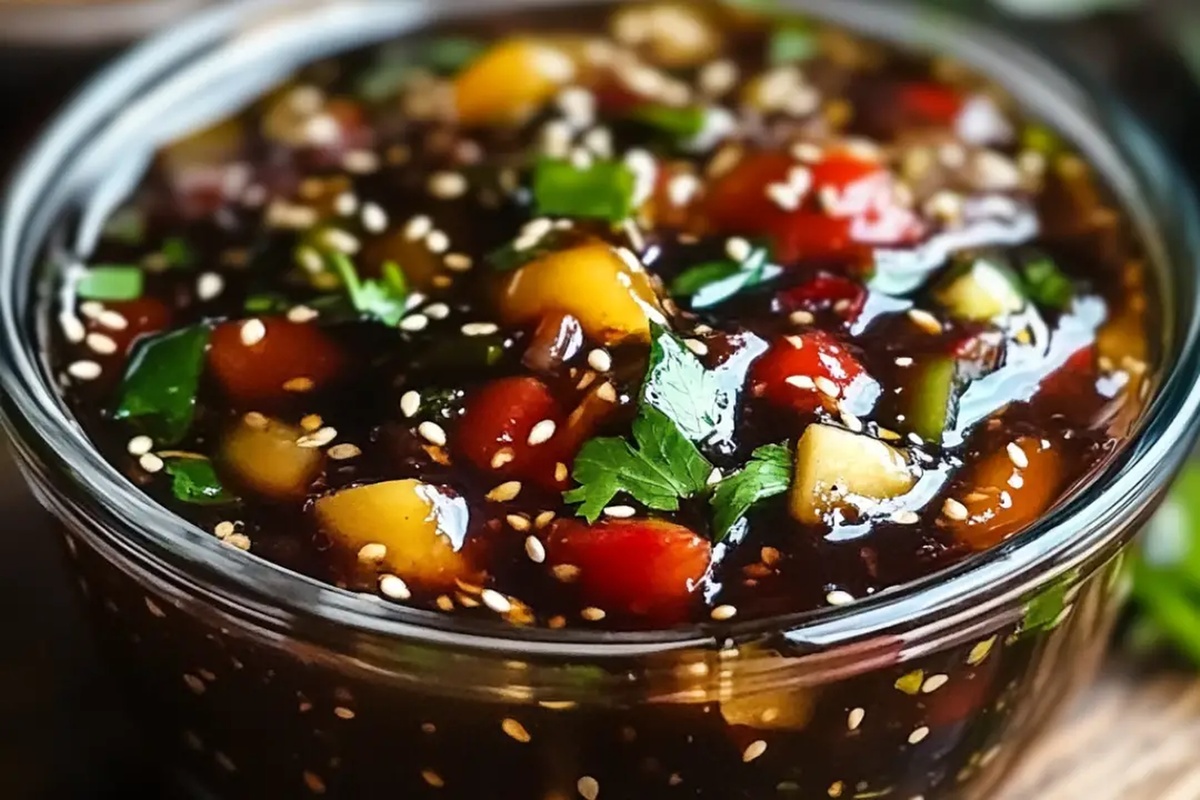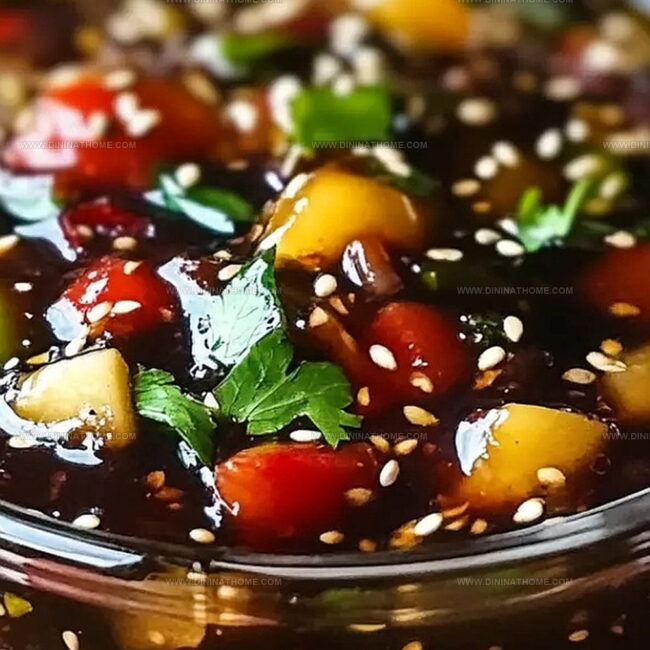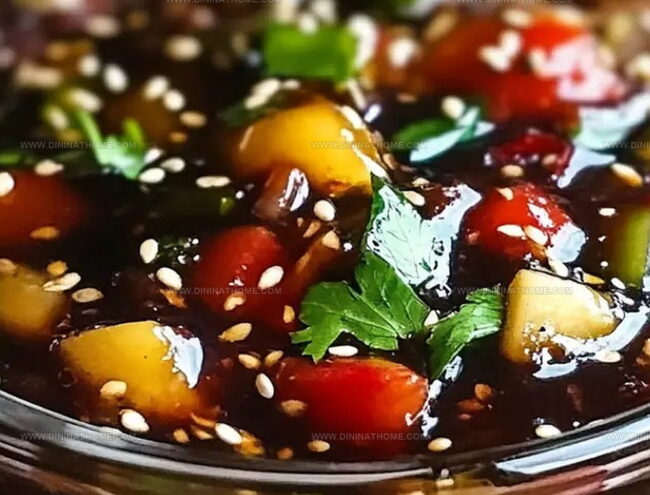Flavorful Everything Stir Fry Sauce Recipe for Easy Dinners
When cooking becomes an adventure, this everything stir fry sauce sparks culinary magic in your kitchen.
Passionate home chefs know complex flavors can emerge from simple ingredients.
My grandmother’s approach to blending seasonings always inspired me to experiment.
Unexpected combinations create memorable meals that dance across taste buds.
Each splash of sauce carries bold personality and depth.
Some recipes transform ordinary ingredients into extraordinary experiences.
You want something that makes dinner feel special without complicated techniques.
Grab a whisk and let’s make something delicious that will surprise everyone at the table.
Why Everything Stir Fry Sauce Will Win You Over
Everything Stir Fry Sauce Ingredient List
Sauce Ingredients:Aromatic Ingredients:Optional Thickening Ingredients:Stir Fry Sauce Preparation in Just a Few Steps
Step 1: Combine Sauce Ingredients
In a small mixing bowl, gather your flavor powerhouses.
Whisk together these delicious components:The goal is to create a smooth, well-blended mixture that will make your taste buds dance.
Step 2: Heat and Thicken Sauce
Transfer the whisked sauce to a small saucepan.
Bring the mixture to a gentle simmer over medium heat.
Let it bubble softly for 2-3 minutes, stirring occasionally.
Watch as the sauce transforms and slightly thickens, concentrating the incredible flavors.
Step 3: Prepare for Cooking or Storage
Remove the saucepan from heat once the sauce reaches your desired consistency.
You can immediately drizzle this liquid gold over fresh stir-fried vegetables, tender meats, or succulent seafood.
If you’re meal prepping, allow the sauce to cool completely before transferring to an airtight container.
Step 4: Store and Enjoy
Refrigerate the sauce for up to one week.
This versatile condiment will elevate any quick weeknight meal or weekend cooking adventure.
Each time you use it, you’ll unlock a world of delicious possibilities.
Stir Fry Sauce: Flavor-Boosting Secrets
Save Everything Stir Fry Sauce for Later
Best Foods to Combine with Stir Fry Sauce
Stir Fry Sauce Recipe Versions
FAQs
You can replace oyster sauce with hoisin sauce, soy sauce mixed with a bit of sugar, or fish sauce for a similar umami flavor profile.
The basic recipe isn’t spicy, but you can easily add heat by including red pepper flakes, sriracha, or chili oil to customize the sauce’s spice level.
Yes, you can prepare the sauce in advance and store it in an airtight container in the refrigerator for up to one week, which makes meal prep easier.
Mix a small amount of cornstarch with cold water and whisk it into the simmering sauce to help it reach your desired thickness.
Print
Everything Stir Fry Sauce Recipe
- Total Time: 8 minutes
- Yield: 4 1x
Description
Savory delights of Everything Stir Fry Sauce dance across your plate with bold, umami-packed flavors. Chinese-inspired condiment delivers a perfect balance of salty, sweet, and tangy notes you cannot resist.
Ingredients
Main Protein:
- No main protein specified in the original recipe
Sauce Ingredients:
- 1/4 cup (60 ml) light soy sauce
- 3 tablespoons (45 ml) oyster sauce
- 1 tablespoon (15 ml) rice vinegar
- 2 teaspoons brown sugar
- 1 tablespoon (15 ml) cornstarch
- 1/4 cup (60 ml) water
Aromatics and Flavor Enhancers:
- 2 cloves garlic, minced
- 1 teaspoon ginger, grated
- 1 teaspoon sesame oil
Instructions
- Gather all sauce ingredients in a compact mixing vessel, using a whisk to thoroughly blend soy sauce, oyster sauce, rice vinegar, sesame oil, minced garlic, grated ginger, and complementary seasonings until smooth and well-integrated.
- Transfer the liquid mixture to a small saucepan, positioning over medium heat to initiate a gentle simmering process.
- Allow the sauce to warm and reduce, continuously monitoring its transformation and stirring occasionally to prevent potential scorching.
- Watch for natural thickening, which typically occurs within 2-3 minutes, indicating the sauce has reached an optimal consistency for coating ingredients.
- Remove the saucepan from heat source, letting the sauce cool slightly and develop deeper flavor complexity.
- Utilize immediately by drizzling over stir-fried vegetables, proteins, or noodle dishes for an immediate flavor enhancement.
- Alternatively, transfer the cooled sauce to an airtight container and refrigerate, maintaining its quality for up to seven days for future culinary adventures.
Notes
- Experiment with low-sodium soy sauce for a healthier version that reduces salt intake without compromising flavor.
- Ensure high heat and quick cooking to maintain vegetable crispness and prevent soggy texture during stir-frying.
- Add cornstarch as a thickening agent if you prefer a more glossy and clingy sauce consistency.
- Consider gluten-free alternatives like tamari sauce instead of traditional soy sauce for those with wheat sensitivities.
- Prep Time: 5 minutes
- Cook Time: 3 minutes
- Category: Dinner, Lunch, Snacks
- Method: Simmering
- Cuisine: Asian
Nutrition
- Serving Size: 4
- Calories: 45
- Sugar: 2g
- Sodium: 870mg
- Fat: 1g
- Saturated Fat: 0g
- Unsaturated Fat: 1g
- Trans Fat: 0g
- Carbohydrates: 9g
- Fiber: 0g
- Protein: 1g
- Cholesterol: 0mg




James Walker
Lead Recipe Developer & Culinary Educator
Expertise
Southern Cuisine & Farm-to-Table Cooking, Recipe Development & Testing, Culinary Education & Instruction
Education
School: Auguste Escoffier School of Culinary Arts
Program: Diploma in Culinary Arts and Operations
Focus: Comprehensive training in classical and modern culinary techniques, kitchen operations, and farm-to-table practices.
James didn’t learn cooking from a TV show, he learned it from busy kitchens, family gatherings, and long afternoons spent testing recipes the hard way.
After training at the Auguste Escoffier School of Culinary Arts, he brought his love for real, down-to-earth food to every dish he makes.
At Dining At Home, James loves building recipes that feel familiar but still have something special, like adding a twist to a classic or making a slow Sunday dinner feel brand new.
When he’s not in the kitchen, you’ll probably find him swapping garden tips at the farmers’ market or teaching his daughter how to flip pancakes without a mess (almost).